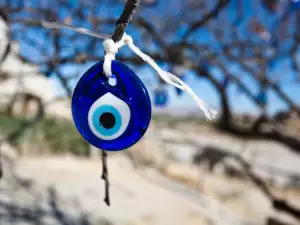Dolphins are known for their powerful intelligence and friendliness towards people. Ancient people thought of the dolphin as the fastest sea creature, so it symbolizes speed.
Shipmasters always took on board an image or statue of a dolphin with an anchor, because it was a symbol of a successful voyage. Over time, the dolphin has become a symbol of navigation and sailing, and the element of water.
Ancient mariners were convinced that the dolphin has the gift of predicting the future, as before a storm, dolphins always hide in deep water.
Oil lamps were made in the shape of a dolphin from the fourth century to the late Middle Ages. From the dolphin's snout stuck out the end of the wick of the lamp and the shape of the smartest sea creatures was one of the most convenient oil lamp designs.
The dolphin is a symbol of salvation, inspired by the ancient legends about how dolphins have rescued people from drowning in the sea. There are many paintings and statues of images of people on the back of a dolphin, which emerges from the waves.
As an occult symbol the dolphin is a sign of relief and prediction. In ancient Greece, during contests, they had special columns with images of dolphins. Next to them were allowed to work women who are known to be clairvoyant, to welcome customers and predict the future.
Two dolphins swimming in one direction symbolize a happy medium between the extremes.
The Greek god Apollo was known as Delfinios and regularly appeared among the people in the image of this sea creature.
The ancient Greeks believed that dolphins are reborn sailors who died in the sea. In Greek mythology, some of the gods – such as Aphrodite - travel on dolphins. According to the ancient Greeks, the god of wine Dionysus was fond of turning drunken sailors into dolphins.









